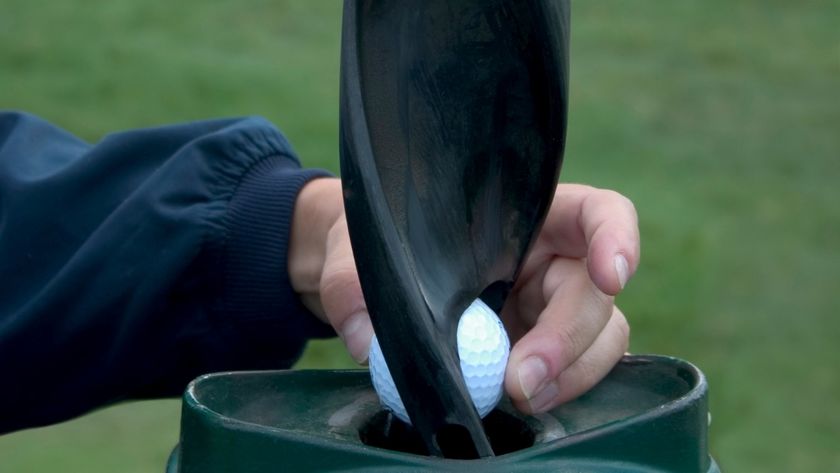Just how much DO Golf Caddies Make in the PGA tour and otherwise? Well, let me share a little background info first!
Fun fact: the word “caddy” comes from the Scottish words “caddie” or “cawdy” which are both derived in the 17th century from the French word cadet and originally meant a student military officer. It would later come to refer to someone who did odd jobs.
Being the place where golf originated, by the 19th century, the word caddy came to refer to those who carried clubs for a golfer, in those days likely a lord or a very wealthy businessman.
Today, Caddies are as part of the game of golf as the actual golfers are. Without them, carrying the equipment and maintaining the flow of the game, golf can be quite taxing. Because of their tireless contributions to a game we all know and love, it’s no wonder that caddying is considered one of the most lucrative and high-paying jobs in the world.
Wanna know how much golf caddies make? What makes it such a lucrative profession that many youngsters flock towards? What are their responsibilities and how much is a PGA Tour level caddy paid? All that and more will be answered!
Role of the caddies

Since the days of simply lugging the golfer’s equipment around the course, caddies have since taken on more and more responsibilities. The things they do are meant to ensure the smooth flow of a golfer’s game and maintain the impeccable condition of the golf course. They are also the reasons why caddies are well compensated for their efforts.
Carrying Equipment: Traditional Caddying & Fore-Caddying
The main and most well-known job of the caddy is to carry a golfer’s equipment. This is important for several reasons.
- Firstly, golf equipment can be quite heavy, needing some help to get it from spot to spot in the golf course.
- Secondly, golfers who carry their equipment themselves tend to strain themselves on such a large area, burning themselves out and making them play on the course less often.
- Lastly, having help carrying the heavy equipment can make the travel time between holes much faster, cutting down the playtime of a game that’s infamous for taking hours.
- This last point is especially important for courses trying to accommodate as many golfers as possible, especially during peak season.
There are two types of carrying caddies:
Traditional Caddying involves both the golfer and the caddie walking the course. The caddie is in charge of carrying the player’s bag, watching the ball when on the green, helping golfers know which club to use for a specific shot/hole, and walking ahead of the golfer to locate their ball.
They can even calculate the yardage to the pin and/or hazards and it is not uncommon for golfers to ask for advice from a caddy on matters such as club selection, where to hit, and where to aim a putt. This is the most common method used in golf clubs and is the only method allowed in the PGA (Professional Golf Association) and LPGA (Ladies Professional Golf Association).
Fore-Caddying entails the caddie walking while the players ride in carts. The fore-caddie will give a hole description and then walk ahead to spot the players’ tee shots.
The caddie then sets everything up before the players arrive, doing things like getting the player’s yardage. The caddie walks ahead again to spot the golfer’s next shots. This process is continued until the players reach the green.
Crowd Control
Sometimes a caddy can be tasked by the golf course to control large crowds of spectators, such as during tournaments, or other golfers, such as during peak seasons when courses get congested.
Cleaning Golf Equipment

If asked, a caddy can wash golf balls and clean clubs as well as give the golf bag a good wipe down.
Maintaining the Course
The caddie can be responsible for raking traps on the course and ensuring proper course etiquette is observed.
Apart from all this, caddies also offer great mental and moral support for golfers along with helpful advice (if asked), especially during high-stakes scenarios.
Requirements & Ranks
There is little to no required education or experience needed to become a PGA Tour caddie, so many caddies can start working right after high school or college.
Many golf clubs have a ranking system for their caddies. In the US, a caddie will usually start as a trainee before being promoted to a Class B caddie after a few months to a year. A year after that, a caddie might be promoted to a Class A. In their fourth year (if they have earned it), they will receive the title of Honor caddie.
Championship caddies have usually been working for about 6 years but it can sometimes take up to 10 years to obtain this class.
Many clubs though prefer to keep things simple and only label their caddies as either class B (for younger caddies) or class A (for more experienced caddies)
Most caddies work 30 weeks a year or less. This leaves almost 40 percent of the year free for them to pursue other jobs or enjoy their free time.
How Much Are Caddies Paid: Salary + Winnings

Caddies usually make around $100 to $120 for four hours of work at golf and country clubs. Though this figure may vary, the pay for caddies tends to be very high throughout. This makes the job extremely appealing to high school or college students looking for a lucrative side job for extra money or to pay for their school expenses. And that’s not even taking the tips into account!
The fact that no formal education is required also goes greatly into making the job very sought after.
The more experienced caddies, or those of a higher rank, earn much more than that through several other sources available to them.
For PGA Tour Level Caddies?

A caddy’s pay for a PGA Tour is a combination of a weekly stipend plus a percentage of a player’s winnings.
While every player and caddie has a different and personal agreement amongst themselves, according to general estimates, PGA Tour caddies can make anywhere between $1,500 and $3,000 per week.
A PGA tour caddy can also earn a percentage of a player’s winnings since they contribute greatly to a player’s performance.
A typical caddie rate is around 5% of the winnings for any finish outside the top 10.
Players breaking into the top 10, but not winning, will share 6-8% of their prize with their caddies.
Winning players can also share as much as 10% of the prize money with their caddy.
Sometimes with a player/caddie agreement, terms can include a caddie taking more for a weekly salary and less on the tournament earnings side. In addition, travel and hotel costs are negotiated. With some players being more generous than others, a player can cover those costs for their caddie as well.
The highest-earning caddie to date, unsurprisingly enough, is the long-time caddie of Tiger Woods, Steve Williams. He is projected to have earned as much as $12 million throughout his career with Woods thus far.
How are PGA Tour Level Caddies chosen?
This is where the saying “it’s all who you know” rings true. Though there are a number of different ways a caddie is chosen for the PGA Tour, more often than not, a pre-existing relationship exists with the player.
The most likely relationships include a close friend, coach, or a caddie that has been on tour and is looking for a new employer. Apart from those more common relationships, you also see siblings and even spouses.
Sometimes, lower-level caddies who work in courses and have become close with a particular player can be brought along to serve as a caddie on a PGA Tour.
Sponsorships
Caddies can even earn from sponsorship deals, though not at the levels of players. How much they are exactly paid can vary but some of the top caddies have earned more than $200,000 from endorsement deals, according to Forbes.
Even low-ranking caddies can be paid for endorsements, simply wearing a hat or a logo somewhere on their shirt, most likely a logo of a club manufacturer or apparel brand.
Tips
Of course, we can’t leave out the fact that, like anybody else in the service industry, caddies can earn quite hefty tips. Although it is hard to place a definite number on how much golfers should tip their caddies, one article by Forbes has found that they usually get around $25 per player. Depending on how many players they handle a day, a caddie can go home with around $50 to $100 a day or more.
Bottom Line…
Caddies are more than glorified luggage carriers. They are part and parcel of what makes golf so special. For professional golfers, going to a tournament without a trusted caddie can be akin to playing without golf clubs, they’re just that important.
From quality service to helpful advice and everything in between, the caddies work hard across uneven terrain and unchanging weather conditions for the benefit of the golfers they’re helping. Is it any wonder they are paid as well as they are?

